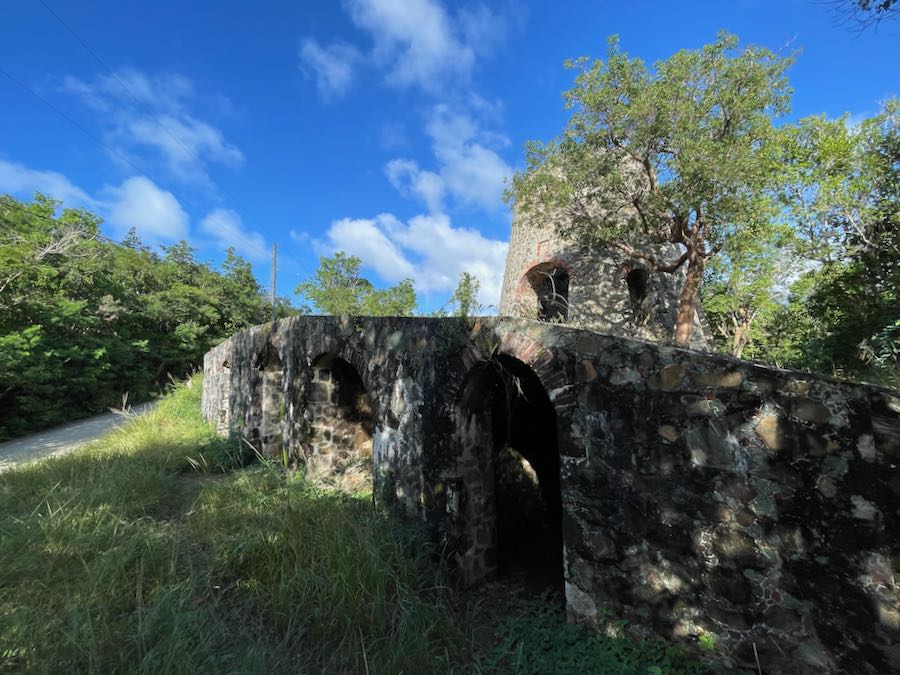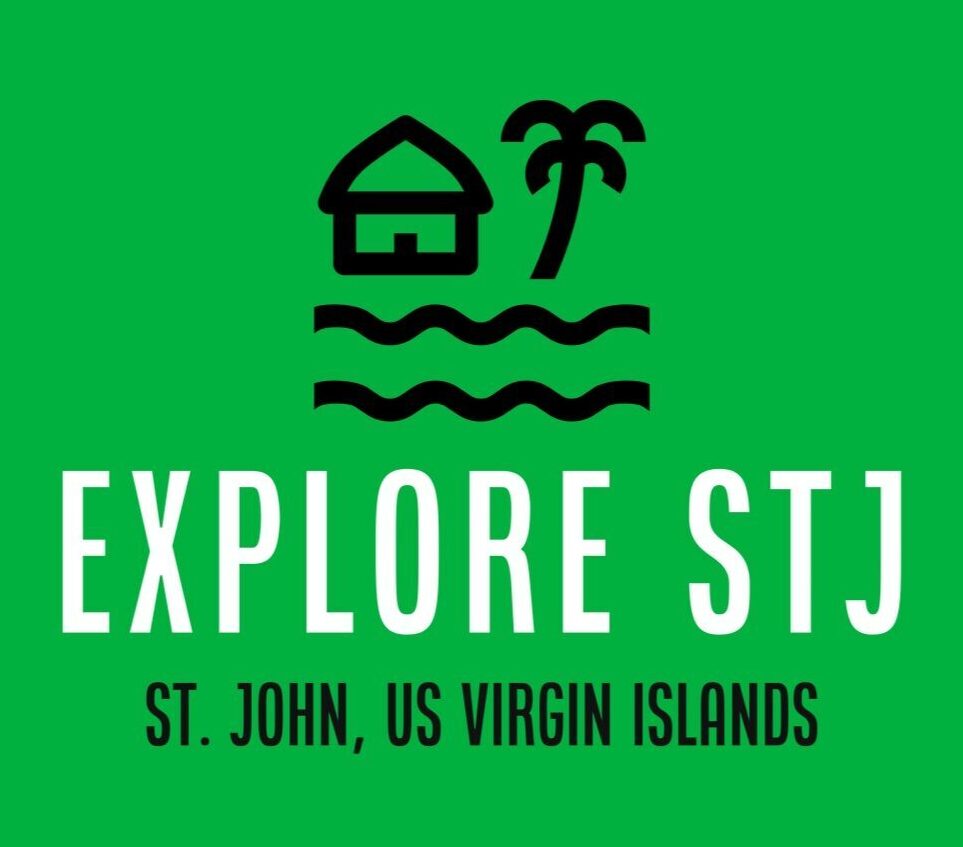
One of the places on St. John that I find to be incredibly fascinating is the Catherineberg plantation. Located three miles from Cruz Bay and approximately 500 feet north of Centerline Road sits an impressive and well-intact 18th century sugar plantation. If you haven’t explored this area already, add it to your must-do list for your next St. John vacation. Or better yet, book an Explore STJ island tour and let me take you there.
Catherineberg, also known as Hammer Farm, Cathrineberg and Jockumsdahl, was parceled out in 1719, one year after Denmark officially settled St. John. Sugar was cultivated on the property beginning in the 1730s, and that continued until the latter part of the 1800s. The site contains a large, unusual windmill, a horse mill, a factory and a still, among other structures.
The Windmill

The windmill is nearly 37-feet tall, and its walls are six-feet wide at the base. Below the windmill are several storage areas, including a long tunnel and separate storage rooms. A t-ramp leads up to the tower. The windmill was built sometime between 1800 and 1826. It is the only windmill on St. John constructed in this manner.


Three large rollers were positioned inside of the windmill tower. The wind turned the “sails” on the windmill, subsequently turning the rollers. Enslaved laborers fed stalks of sugarcane into the rollers, which crushed them and squeezed the juice out. That juice was then boiled and ladled from kettle to kettle. This gradually concentrated and purified the boiling liquid. The juice was then poured into flat wooden pans where it cooled and ultimately crystalized into sugar. If the juice boiled too long, it became molasses instead of crystals. So timing was imperative.





The Horse Mill

The horse mill was also unusual construction for its time period. It’s a circular structure that measures roughly 50 feet in diameter, and its walls were raised four to ten feet above grade level. It, too, had three large rollers in its center. But in this structure, animals were used, as opposed to wind, to turn the rollers. Roughly 25 to 35 carts of sugarcane would be crushed daily using this method. The windmill, by comparison, could crush significantly more sugarcane. The horse mill was built around 1720.
In the early 1850s, the horse mill was converted to a cistern and was used to store water. The horse mill in its current, altered state has lost many of its original features. But it is still a very interesting structure to check out.
The Factory

Just down the hill from the windmill and horse mill sits the remains of the factory house, also known as a boiling house. You can see remnant of a boiling bench, firing trench and a cistern, but the majority of the building is badly deteriorated. The site is unstable, so please do not try to walk up the stairs or too close to the site.

The End of Production
The majority of sugar production ceased in that latter part of the 1800s following the emancipation of the slaves in 1848. By 1867, only five plantation remained operational. In comparison, there were more than 100 operating at production’s peak around the turn of the century.
Catherineberg was then used for cattle farming from roughly 1870 though the 1930s. It is possible, however, that cattle farming began as early as 1846 at this particular location.
So as you can see, St. John isn’t just about the beaches and bars. There’s a lot of rich history on this tiny little island. Be sure to check some of it out on your next trip.
If you’d like more information on Catherineberg or if you are interested in booking an Explore STJ island tour, please feel free to email me at jenn@explorestj.com.

Pingback:Intersting Places to Visit: Catherineberg – Island Tidbits
One of my favorite places
How do I get to these plantation ruins? I have been coming to STJ for 25 years and was unaware of this.
Sounds like a great reason to book an island tour with me! (Shameless plug, I’m sorry! haha) –> http://www.explorestj.com/tour
Take Centerline Road to mile 3. Take a left (if coming from Cruz Bay) at the VI National Park sign. The site is right up that road. It’s a very bumpy dirt road at first.
Pingback:What to Do on a Rainy Day in St. John? - Explore STJ